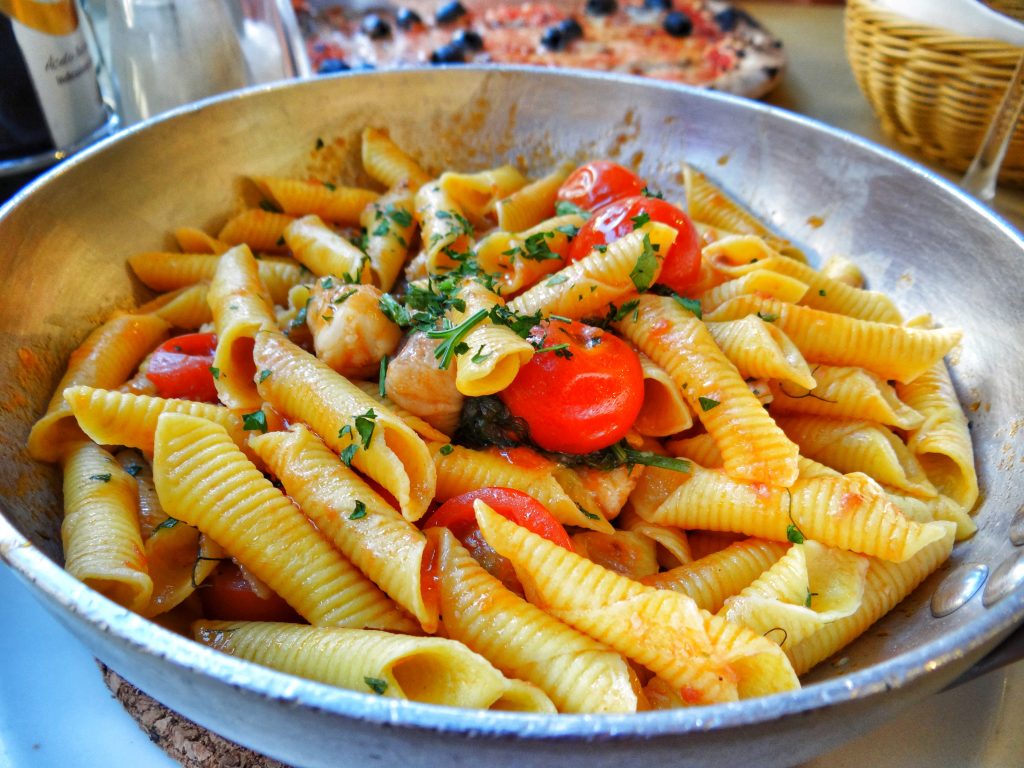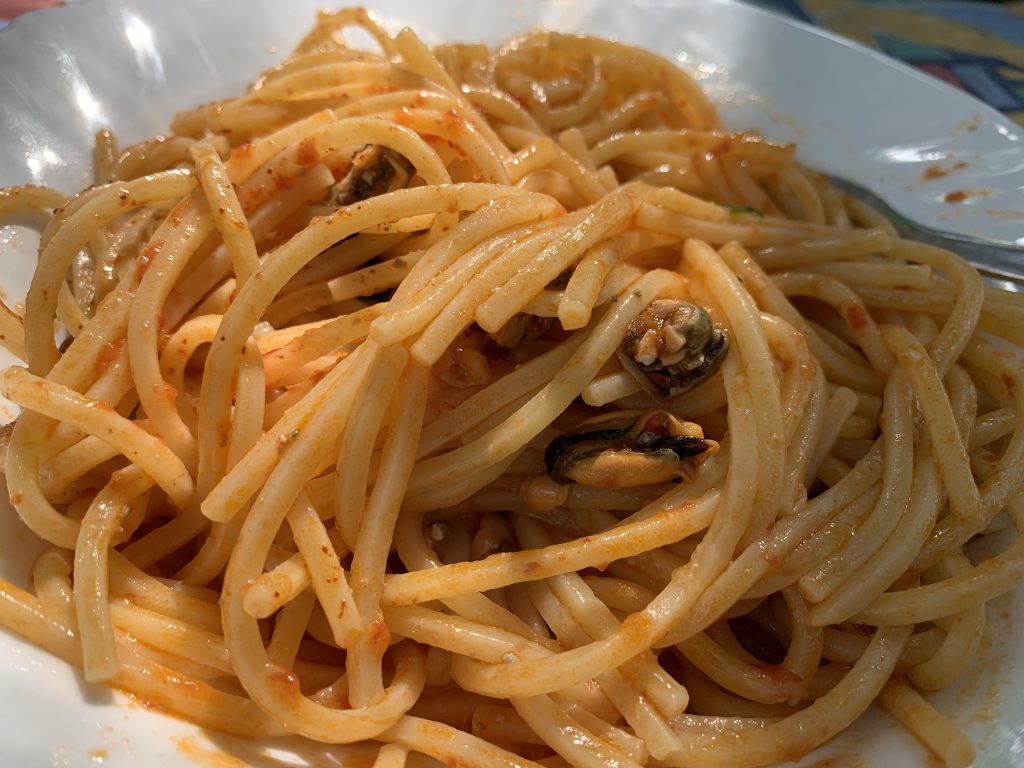We were tickled when we read about the much anticipated opening of Emilia’s Crafted Pasta’s third London offering.
“The clever bods behind Emilia’s Crafted Pasta have spent years working out exactly which pasta goes best with which sauce. So their bolognese is paired with wide silky ribbons of fresh egg pappardelle…”
TimeOut, The best places to eat pasta in London, October 2021.
A dedication to be applauded. Though smarter bods could have saved time and had more fun on holiday in Italy, where that work is long since done.
This is the joy of pasta. The simplicity of ingredients countered by the elegant engineering of shape. Not for creative flourish, rather to ensure the perfect pairing of pasta and sauce.

Fresh troccoli with sautéed red onion and anchovy. Finished with parsley and grated Rodez, a Pugliese favourite. Home made.

Ridges on pasta grip the sauce it is served with.
In Italy you are unlikely to find a thick ragù served with thin pasta ribbons or, worse still, spaghetti. We know which size - diameter and length - and finish - smooth, contoured or with ridges - is best tasked to carry a sauce or ragù with (or without) grattugiato cheese.
Long and wide tagliatelle, pappardelle and fettuccine deserve a rich meaty ragù. Spaghetti, linguine, vermicelli and other long and thin pasta lengths are better served with light seafood sauces, cream, wine or olive oil based sauces.

Fettuccine can carry a heavier load, here with chunks of zucchini. Home made.

Pappardelle with red pepper mascarpone meatballs, a dish that needs the thickness of the pasta. Home made.
Large shell shaped pasta invite a filling - conchiglioni stuffed with tuna (with capers and tomato passata, or with crumbled riccota, salt and pepper) are a revelation.
Mafalda come into their own with fish. Even better when it’s lazy and tinned. Let imagination be your guide.
Fusilli, trofie, strozzapreti, radiatore, caserecce and gemelli cry out for a light tomato sauce or pesto. We serve them with both and often arrabbiata when it comes to tomato sauce.

Spaghetti alla chitarra with cozze (mussels), home made.

Spaghetti alla carbonara. Home made.
Penne, rigatoni, macaroni and other tubular drama are negotiable. Often al forno (think mac and cheese, baked rigatoni with breadcrumbs and beef tomatoes), but equally happy fresh from the pan; penne with ground beef, sage and tomato.

When it comes to making pasta, the sum of the whole may well be greater than its parts. In Puglia pasta dough is stripped down to its most basic. Semolina flour from durum wheat grown and water. Eggs are absent. Puglia’s cucina povera traditions meant eggs were too much of a luxury to be wasted on dough.
It adds a slight, appealing, golden color to our pasta and brings a smooth, less textured, silkiness. Helpful for creamy or emulsified pasta - cacio e pepe, carbonara - but nothing is missed when it comes to taste.

Orecchiette al pesto (cime di rapa, home made).

Spaghetti cacio e pepe. Home made. A triumph!
Want more, want our recipe? Follow us on Twitter…









Great post. I am gonna print this out for when I’m choosing my pastas. I love all shapes and sizes but don’t put much thought into pairing. Clearly I am not getting the most from my meal.
Wonderful post! It was so good to understand which types of pasta best suit which types of sauce. Definitely bookmarking for future use. And it was interesting to learn that eggs aren’t used to make pasta in Puglia. I’m feeling extremely hungry now!
You’d be appalled to see what happens in America with various pasta and sauce combos then haha
Interesting to read about the pairing of pasta with sauces in general and the Apulian peculiarities. I remembered from another post or tweet of yours that Apulia used to be a poor province historically and I love how that led to a cuisine that makes great use of all ingredients and doesn’t waste anything. In my mind, most of the best dishes come from such a tradition of making ends meet, like onglet, pastrami, sushi.
Very interesting and useful – but makes perfect sense! I want each dish, as pictured!